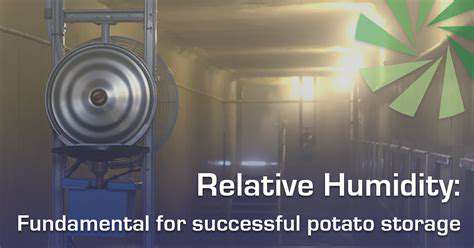How to Store Potatoes Long Term: Cool & Dark
Jul 29, 2025 / btwgardenmachine/
Proper Potato Handling and Storage Techniques
Proper Handling for Maximum Shelf Life
Potatoes are best handled with care to avoid bruising and damage, which can accelerate spoilage. Gently lift and transport potatoes, avoiding rough surfaces and collisions. Use a sturdy container or basket for storage, rather than just tossing them in a bag. This careful handling minimizes the introduction of microbes and physical damage, significantly extending their storage life. Focus on minimizing stress and potential injury during the entire process, from harvesting to storage.
When purchasing potatoes, select firm, unblemished tubers. Avoid those with soft spots, bruises, or sprouts. These are more prone to rapid deterioration. Bring them home promptly and store them in a cool, dry place to maintain optimal quality. This initial selection and handling step is vital for ensuring a long storage period and preventing early spoilage.
Optimal Storage Temperature and Environment
Maintaining a cool, dark, and well-ventilated environment is crucial for potato storage. Temperatures between 45-50°F (7-10°C) are ideal for preserving their quality and preventing sprouting. A cool basement or root cellar, if available, provides an excellent environment. Avoid storing potatoes near heat sources, such as ovens or radiators, as these can significantly shorten their shelf life.
Proper ventilation is just as important as temperature. Air circulation prevents moisture buildup, which promotes rot. Store potatoes in a mesh bag or a perforated container to allow for adequate airflow. Controlling humidity levels is a key element to prevent moisture damage, which can lead to rapid deterioration.
Preventing Sprouting and Maintaining Quality
Sprouting is a natural process that occurs in potatoes when exposed to light and higher temperatures. To prevent this, store potatoes in a dark, cool environment. Light is a significant trigger for sprouting, so avoid storing them near windows or in a brightly lit area. Maintaining consistent temperature and avoiding fluctuations is key to preventing early sprouting and preserving the potatoes' texture and flavor.
To further delay sprouting, consider storing potatoes in a paper bag or container, rather than plastic. Plastic can trap moisture, which accelerates the sprouting process. Properly storing potatoes in these ways helps maintain their quality and prevents premature deterioration. Consider these tips to maintain the freshness and quality of potatoes during long-term storage.

Long-Term Storage: Extending the Life of Your Potatoes
Proper Storage Environments for Optimal Potato Longevity
Maintaining the ideal environment for potato storage is crucial for preserving their quality and extending their shelf life. Potatoes, like many root vegetables, thrive in cool, dark, and well-ventilated spaces. Avoid storing them near strong-smelling foods, as their natural odors can be absorbed, potentially affecting the flavor and texture of the potatoes.
Temperature is paramount. Aim for a cool temperature range between 50-60°F (10-15°C). Temperatures exceeding 60°F will lead to sprouting and deterioration, while temperatures below 50°F can result in chilling injury. Consistent temperature is key for preventing rapid changes in the potato's internal environment.
Choosing the Right Storage Containers
Selecting appropriate containers for your potatoes is just as important as the environment. Avoid storing potatoes in plastic bags, as they can trap moisture and lead to spoilage. Instead, opt for breathable containers like mesh bags or perforated cardboard boxes. These allow air circulation, preventing excess moisture buildup and the development of rot. Proper ventilation is essential for preserving the quality of your potatoes.
Consider using a cool, dark pantry or basement for long-term storage. If space is limited, a dedicated storage area within your refrigerator is a good option for shorter-term storage. Remember, proper ventilation is key regardless of the storage location.
Understanding the Importance of Moisture Control
Maintaining the correct moisture level is crucial for preventing potato decay. Excess moisture can lead to mold and rot, significantly reducing the lifespan of your potatoes. A dry environment will help maintain the crispness and texture of your potatoes, as well as prevent the development of undesirable microorganisms. Potatoes are sensitive to moisture changes, so a consistent environment is paramount.
Preventing Pests and Maintaining Potato Quality
Beyond temperature and moisture, protecting your potatoes from pests is vital. Inspect your potatoes regularly for any signs of damage or insect infestation. Proper handling and storage practices can significantly reduce the likelihood of pest issues. Keeping potatoes away from other produce items that may attract pests is also a good practice. A clean and organized storage area will prevent the development of pest problems and maintain the integrity of your potatoes.
Regular checks for sprouting is also essential. Sprouting potatoes indicate that the storage conditions are not ideal. If you notice sprouting, it's best to use those potatoes sooner rather than later to prevent further deterioration. Addressing the underlying storage issues is crucial to preventing future sprouting.